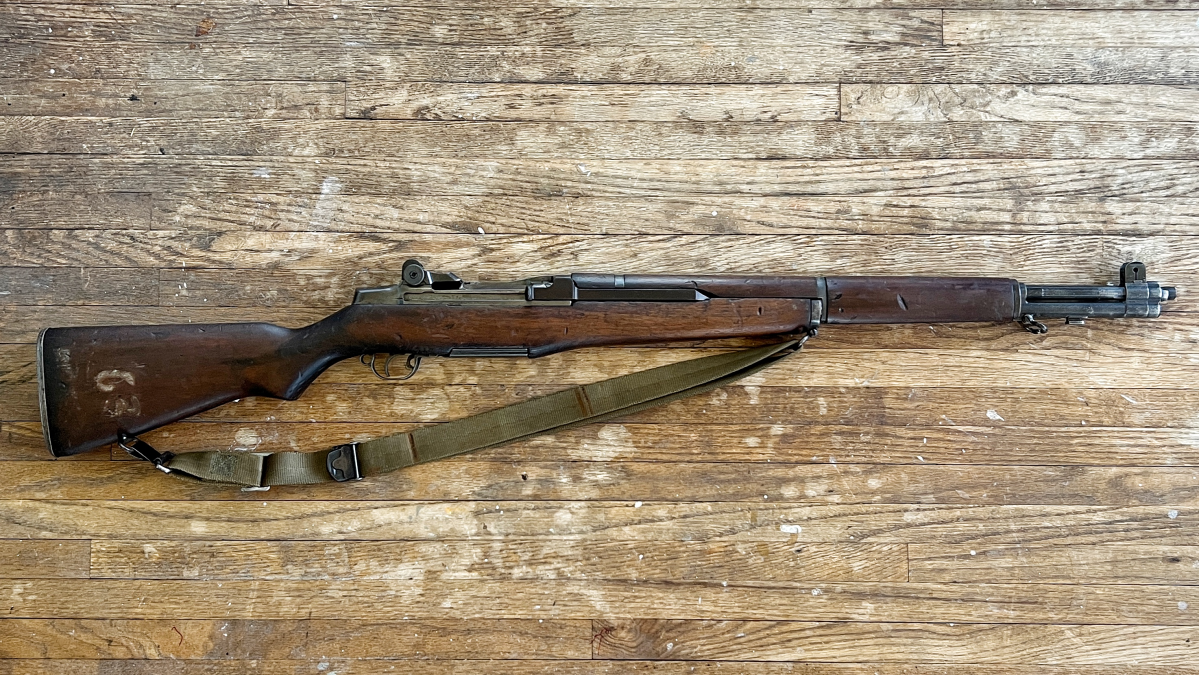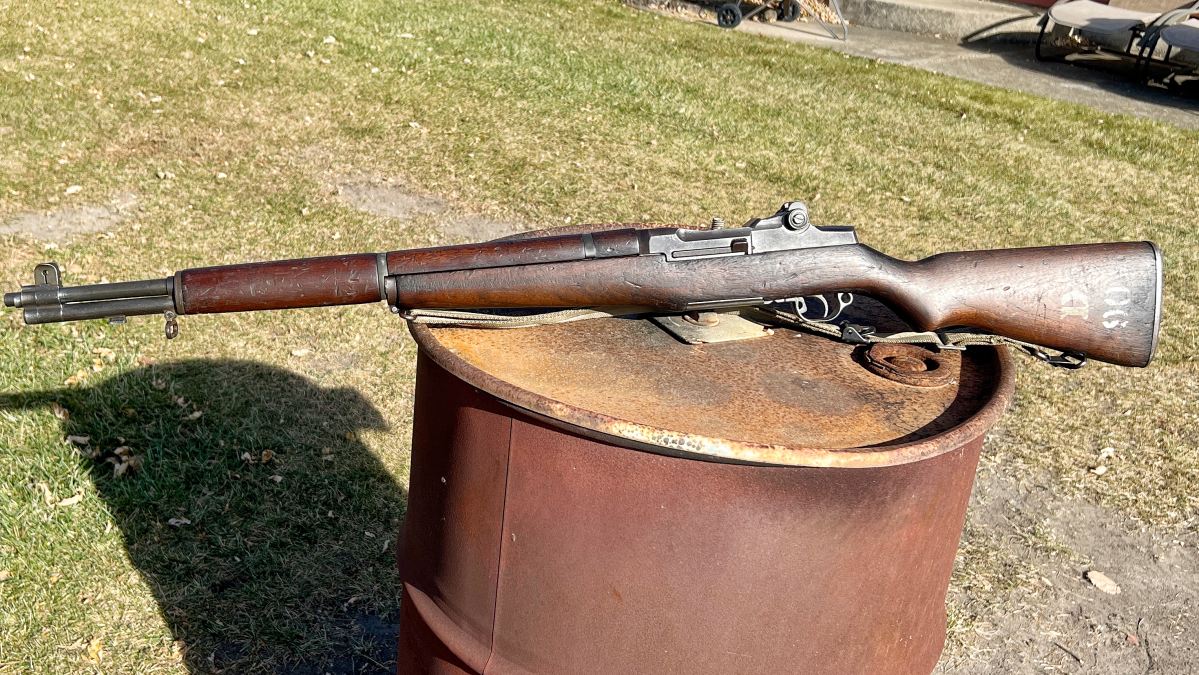Curious Relics #052: Same Skeleton, Different Muscle – The M1 Garand
Sam.S 11.16.22
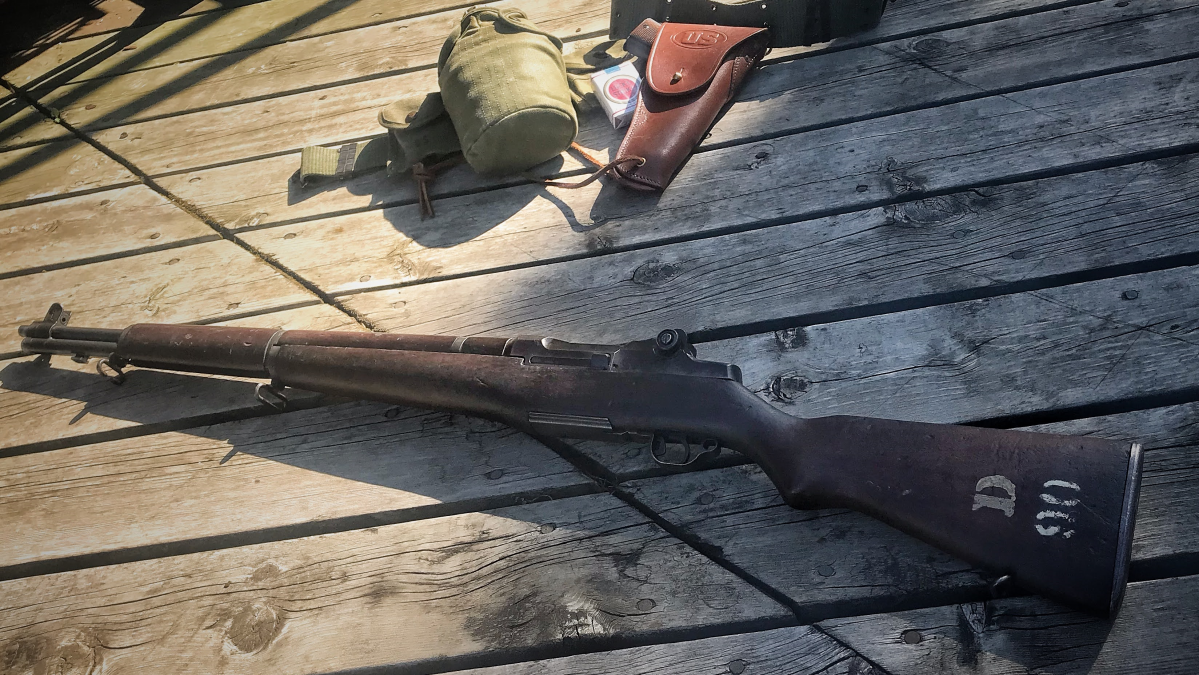
Welcome, if you are a newcomer to this fun bi-weekly segment of AllOutdoor.com! The last time around I covered the history of an American icon which is the M1 Garand. In that article, we looked closer to see that this rifle had a service life that extends to today! Some commercial instances of the M1 Garand have popped up since its full-on military service life but today we are looking at the essentials under the microscope. Let’s dive right into the rabbit hole!
Welcome to our recurring series of “Curious Relics.” Here, we want to share all of our experiences, knowledge, misadventures, and passion for older firearms that one might categorize as a Curio & Relic – any firearm that is at least 50 years old according to the ATF. Hopefully along the way you can garner a greater appreciation for older firearms like we do, and simultaneously you can teach us things as well through sharing your own expertise and thoughts in the Comments. Understanding the firearms of old, their importance, and their development which lead to many of the arms we now cherish today is incredibly fascinating and we hope you enjoy what we have to share, too!
Variations: The M1 Garand
Opening Note on Variations
So as I just mentioned in the opening blurb there were in fact commercially made or repurposed M1 Garand rifles. I am not including those rifles in this list mainly to save space for the “actual” variants and the cool experimental ones that popped up in wartime. Despite the vast amount of M1 Garand articles, books, and videos there it was actually hard to nail down dates for some of the experimental ones so bear with me.
Gas Trap Garand: Commonly referred to as the Model 1936, the Gas Trap Garand was the initial accepted design of the M1 Garand. It was John C. Garand’s attempt to stay away from poking holes in the barrel to vent gas. It used a gas apparatus out in front of the barrel that caught excess gas that passed by as the cartridge left the barrel. These gas trap rifles were manufactured as a whole until 1939 and it is estimated that roughly 18,000 total rifles were produced. The reason there was an engineering change in favor of the common gas port apparatus was due to the unreliability of the gas trap system. It was no fun to clean, it would come loose and get shot off of the rifles, and the front sight was found to shift while firing. Unfortunately, parts for the gas trap rifles were made in mass so spare parts continued to be put onto rifles and this brings the new estimated production to roughly 51,000. Those were made well into 1940 and saw service at the beginning of the war in the hands of the Army. As rifles came in for repair they were retrofitted with the gas port system.
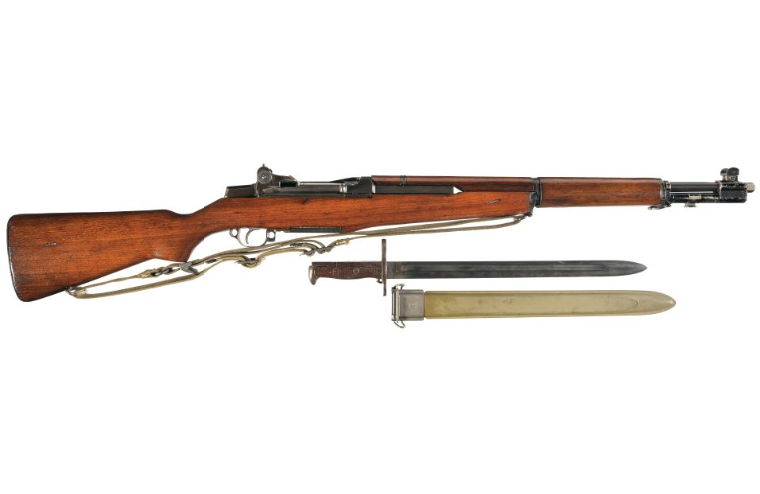
Lot 3538: M1 Gas Trap M1 Garand Rifle Rare Early Gas Trap M1 Garand Semi-Automatic Rifle with M1905 Bayonet and Scabbard. (n.d.). Rock Island Auction Company. photograph. Retrieved November 2, 2022, from https://www.rockislandauction.com/detail/83/3538/m1-gas-trap-m1-garand-rifle.
Excepted Standard: A very broad and basic description for this one because in a way there is no exact “excepted” M1 Garand. Made from 1936 until around 1958 when it was replaced by the M14. The M1 Garand would come to be manufactured by a whole host of different entities throughout World War Two. These rifles would go on to be used and replaced/repaired through the years.
Navy Garand: After the M14 was adopted in the new military cartridge of 7.62×51 they began cranking the rifles out as fast as they could but most attention was given to the Army and Marines. This left the Navy wondering where their service rifles were. In the meantime, a system was put in place to convert M1 Garand rifles to 7.62×51 for the navy.

Lot 2707: U.S. Springfield Armory M1 Garand Mark 2 Mod 1 Navy Trophy Rifle – U.S. Springfield Armory M1 Garand Secretary of the Navy Mark 2 Mod 1 Trophy Semi-Automatic Rifle in 7.62 Nato. (n.d.). Rock Island Auction Company. photograph. Retrieved November 15, 2022, from https://www.rockislandauction.com/detail/1039/2707/us-springfield-armory-m1-garand-mark-2-mod-1-navy-trophy-rifle.
M1C – Sniper: This was in development from 1943 and excepted in 1944 as the first real deal sniper variant of the M1 Garand Rifle. During World War Two the main sniper rifle in use by American troops was the bolt action Springfield M1903. The M1C was a late and rare addition that saw VERY little use in the war. The M1C was known developmentally as the M1E7 and it featured a commercial/civilian-made scope mount by Griffin & Howe. It used threaded screws to screw into the left side of the receiver and due to the clip-loading mechanism of the Garand, it had to be off to the left side… making this a very right-handed rifle! It was paired with the “M73” telescopic sight made by Lyman. In January of 1945, the M37 flash hider was added to the muzzle of the two sniper variants.
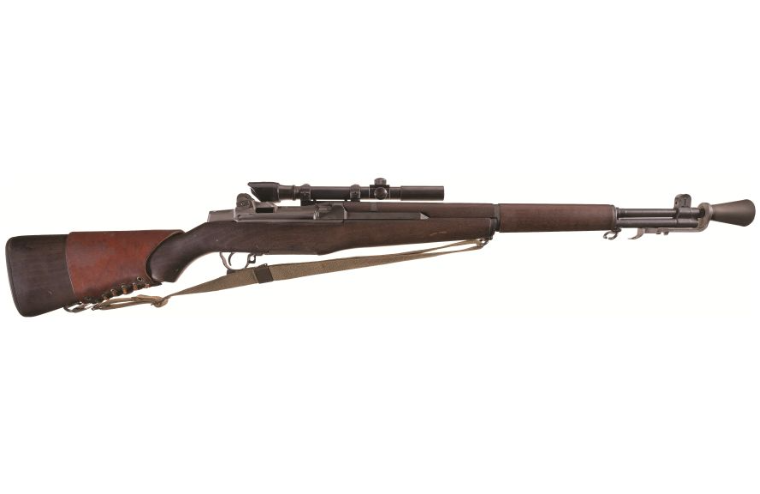
Lot 458: U.S. Springfield Armory M1C Semi-Automatic Sniper Rifle – Desirable World War Ii U.S. Springfield Armory M1C Semi-Automatic Sniper Rifle with M82 Telescopic Sight and Matching Numbered Bracket. (n.d.). Rock Island Auction Company. photograph. Retrieved November 15, 2022, from https://www.rockislandauction.com/detail/82/458/us-springfield-armory-m1c-semiautomatic-sniper-rifle.
M1D – Sniper: Developmentally referred to as the M1E8, the M1D was a very quick follow-up to the M1C in that it was developed in tandem or right after the M1C. The only real defining difference is the barrel-mounted scope mount that had a quick detach knob. While the M1C used the M73 scope this one probably did as well since they were made at the same time but the ordnance department would modify the M73 by adding a rain/sun shade and called the new 2.2x scope the M81 and eventually the M82 which had a different reticle. In January of 1945, the M37 flash hider was added to the muzzle of the two sniper variants.
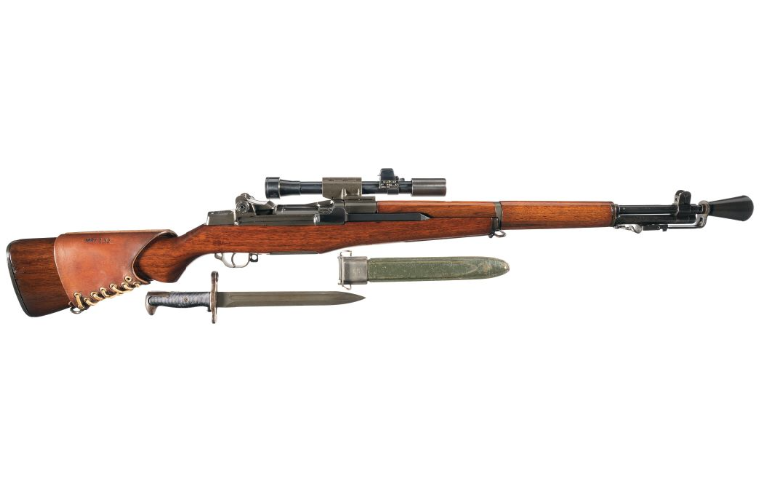
Lot 426: U.S. Springfield M1D Semi-Automatic Sniper Rifle with M84 Scope. (n.d.). Rock Island Auction Company. photograph. Retrieved November 15, 2022, from https://www.rockislandauction.com/detail/83/426/us-springfield-m1d-semiautomatic-sniper-rifle-with-m84-scope.
Honorable/Experimental Variations
T20 “Select Fire”: An experimental M1 Garand variation that was intended to replace the BAR as a support weapon. It featured a 20-round magazine (in some cases a BAR magazine) and a selector switch located on the right-hand side of the receiver toward the rear. These were found to be simply uncontrollable no matter the rate of fire. Side note, the rate of fire is reported to be around 900 rpm which is astounding. Despite these never being put into full-on production there are written reports of soldiers modifying their M1 rifles to be fully automatic.
T26 “Tanker”: Made sometime in 1944, an M1 Garand with an 18-inch barrel and modified gas system to be shorted. Thought to potentially be a better fit for soldiers whose roles would be aided by a shorter but still powerful rifle, the T26 was produced in a few test runs but never really went anywhere and never saw action.

Lot 688: Custom “Tanker” Style Springfield Armory M1 Garand Carbine. (n.d.). Rock Island Auction Company. photograph. Retrieved November 15, 2022, from https://www.rockislandauction.com/detail/1040/688.
M1E5 “Paratrooper”: Made around the same time as the T26 “Tanker” Garand, the M1E5 was supposed to be used by American paratroopers. It had everything that the Tanker version had except it had a foldable stock and sometimes (after the first tests) a crude pistol grip. These were found to have excessive and uncomfortable recoil as well as a very noticeable muzzle flash. It was found to have diminishing returns and the idea was scrapped.
T35: One well-known shortcoming of the regular M1 rifle is that it was not able to be easily “topped off”. The user would have to eject the half-used en bloc clip and insert a fresh fully loaded one. The T35 developed in the early 1950s sought to alleviate that issue. Roy S. Sanford would develop a magazine system that was loaded by two M1903 rifle stripper clips rather than an en bloc clip. Unfortunately for this unique internal magazine system, the rifle was found to be difficult to load with these clips and the idea was rejected by the military.
End of Part Two: The M1 Garand
So comes to the end of this part of the M1 Garand story. I realize there is a multitude of Garands out there and I may have missed one or two. Since there is so much information out there I actually found it to be a sort of overflowing and flooded topic that I struggled to narrow things down. Very excited to push on with this beautiful piece of American military history!
In closing, I hope our Curious Relics segment informed as well as entertained. This all was written in hopes of continued firearm appreciation and preservation. We did not just realize how guns were supposed to look and function. It was a long and tedious process that has shaped the world we live in. So, I put it to you! Is there a firearm out there that you feel does not get much notoriety? What should our next Curious Relics topic cover? As always, let us know all of your thoughts in the Comments below! We always appreciate your feedback.
